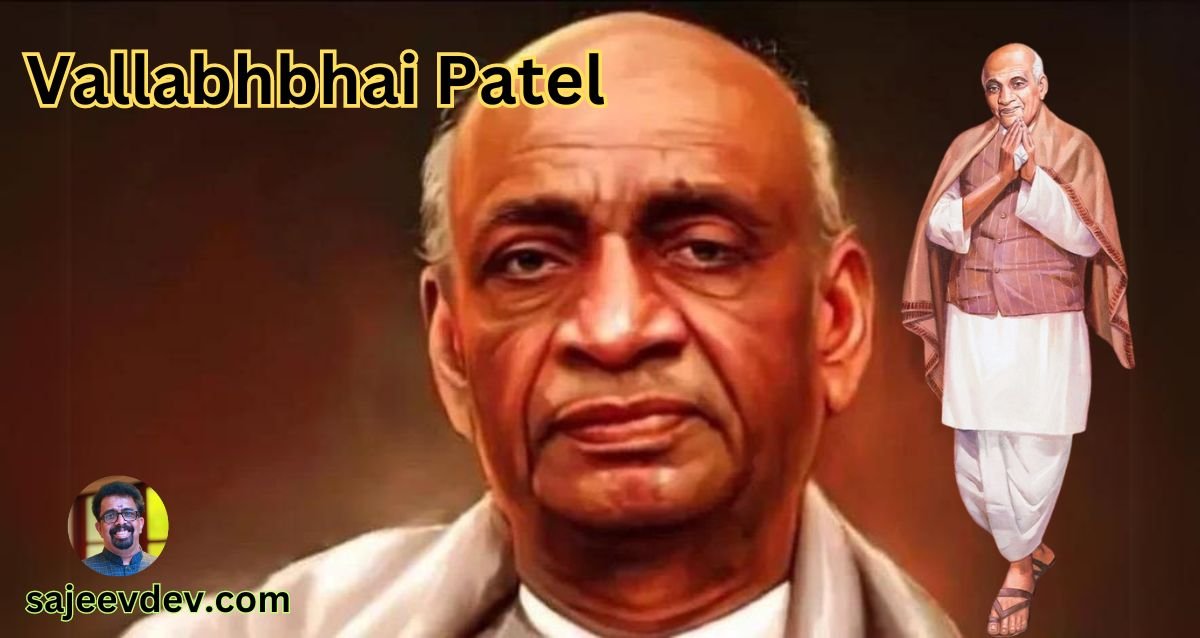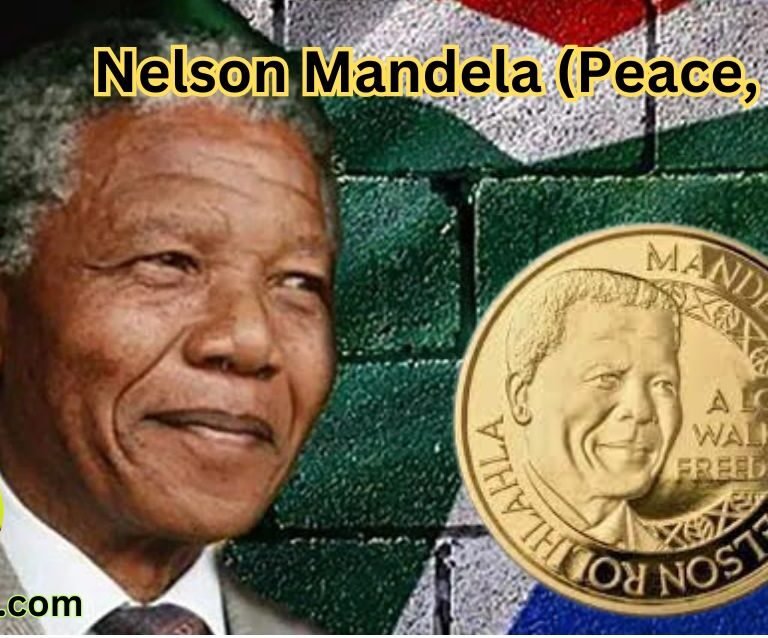Vallabhbhai Jhaverbhai Patel, later renowned as Sardar Vallabhbhai Patel
Vallabhbhai Jhaverbhai Patel, later renowned as Sardar Vallabhbhai Patel, was born on October 31, 1875, in Nadiad, a town in Gujarat, India. Hailing from a humble family, Patel was the fourth of six children. His parents, Jhaverbhai Patel and Ladba Patel, were deeply rooted in the traditions and values of Gujarati society. His father was a farmer, and his mother was a deeply religious woman who imbued in her children the principles of honesty, integrity, and determination.
From a young age, Vallabhbhai exhibited strong will and an unyielding spirit. Despite the limited resources available to his family, he aspired to attain an education. He began his academic journey in local schools, showing a keen interest in learning and a remarkable ability to grasp complex subjects. These early experiences instilled in him the value of self-reliance and hard work, traits that would later define his illustrious career.
Patel’s determination led him to pursue higher education, and he attended schools that offered limited but valuable opportunities in the rural settings of Gujarat. His thirst for knowledge eventually took him to England, where he furthered his studies. Graduating in law from the Middle Temple, London, Patel returned to India as a qualified barrister. His legal career took off rapidly as he established a practice in Ahmedabad, where he earned a reputation for his expertise and unwavering commitment to his clients.
Vallabhbhai Patel’s transition from a successful lawyer to a prominent leader in the Indian independence movement was marked by his deep-seated values and relentless dedication to justice and equality. These early experiences and the values he inherited from his family provided a solid foundation for his future role as a pivotal architect of modern India. His impressive educational path and professional achievements laid the groundwork for his significant contributions to the nation’s struggle for freedom.
The Legal Career and Rise to Prominence
Sardar Vallabhbhai Patel’s journey to becoming a revered leader in India began with his highly successful legal career. As a barrister, Patel quickly earned a reputation for his astute legal mind and persuasive abilities. Known for his strategic thinking and meticulous preparation, Patel forged a distinguished career in the legal arena. His approach to law was characterized by thorough research and an unparalleled skill in argumentation, which won him the respect of both his peers and opponents.
Patel’s prowess in the courtroom was exemplified through a series of pivotal cases that not only showcased his capabilities but also honed his skills in leadership and negotiation. One particular landmark case that stands out in his career is the Nadiad Case. His handling of this case impressed many and significantly boosted his prominence within the legal community. His success in such high-profile cases underscored his ability to think strategically and negotiate effectively, traits that would later become invaluable in his political career.
The transition from a legal luminary to a national leader was seamless for Patel, given his background in the courtroom’s adversarial environment, which mirrored the competitive nature of politics. His ability to persuade and lead was evident in his legal practices, where every case was a testament to his methodical approach and leadership. These experiences laid a strong foundation for Patel’s role in India’s independence movement, where his legal acumen and negotiation skills were instrumental in the unification of India’s princely states.
Understanding the importance of unity and strategic alliances from his legal career, Patel became a crucial figure in India’s struggle for independence. His rise to prominence in the national political landscape was not sudden but the result of years of honed skills in leadership, strategy, and negotiation, first evidenced in his illustrious legal career. His time as a barrister was not just a profession but a training ground for the pivotal role he would play in shaping modern India.
Joining the Indian National Congress
Sardar Vallabhbhai Patel’s entry into the Indian freedom struggle marked a significant turning point in his life. His motivation to join the Indian National Congress (INC) was rooted in his deep-seated desire to see India free from the shackles of British colonial rule. Patel was deeply influenced by the burgeoning nationalist movement and the ideals espoused by prominent leaders like Mohandas Karamchand Gandhi. His foray into politics began in earnest when he participated in the Home Rule Movement, which advocated for self-governance and greater political representation for Indians.
Pivotal to Patel’s political journey was the profound impact of Gandhi’s ideology of non-violence and civil disobedience. Inspired by Gandhi’s call to action, Patel became increasingly involved in INC activities. He soon emerged as a dynamic organizer and speaker, capable of uniting people across diverse backgrounds towards a common cause. His leadership qualities and unwavering commitment to the cause of India’s independence earned him the moniker “Iron Man of India,” reflecting his steely resolve and perseverance.
Patel’s early political activities included organizing peasants in Gujarat against oppressive policies imposed by the British. His role in the Kheda Satyagraha of 1918 was particularly noteworthy, where, under Gandhi’s guidance, Patel led the farmers in a non-violent protest demanding the suspension of land revenue collection during a famine. This successful campaign not only alleviated the immediate plight of the farmers but also established Patel as a formidable leader in the nationalist movement.
Joining the Indian National Congress provided Patel with a platform to work alongside other key leaders, contributing significantly to the fight against colonial rule. His association with the INC enabled him to harness the collective strength of the Indian populace and channel it towards achieving self-rule. Patel’s strategic acumen and organizational skills were instrumental in mobilizing and galvanizing support for the independence movement, further solidifying his legacy as a stalwart of Indian nationalism.
Role in the Indian Independence Movement
Sardar Vallabhbhai Patel played a pivotal role in India’s struggle for independence. His notable contribution came in 1928 with the organization of the Bardoli Satyagraha. This event not only elevated his status among the masses but also bestowed upon him the revered title ‘Sardar,’ meaning leader.
The Bardoli Satyagraha was a critical campaign of non-violent resistance against the British-imposed tax hikes on farmers. Patel’s strategic acumen was evident as he successfully mobilized the local peasantry against the draconian measures. By advocating for non-violent methods, Patel underscored the importance of peaceful protests, which became the cornerstone of the larger Indian independence movement.
Patel’s organizational skills and ability to galvanize support played a crucial role in various other protests and campaigns. He was an ardent follower of Mahatma Gandhi’s principles of non-violence and truth. This alignment with Gandhian philosophy helped him guide and moderate a large section of the Indian National Congress, furthering the cause of independence through non-violent means.
Patel’s involvement was not limited to Bardoli; he was intricately involved in numerous other initiatives aimed at securing India’s freedom from colonial rule. His participation in the Quit India Movement of 1942 and various other campaigns demonstrated his unwavering commitment to India’s liberation. His approach combined non-violence with uncompromising defiance, earning him a reputation as a leader who could reconcile firmness with compassion.
Overall, Sardar Vallabhbhai Patel’s influence on the Indian independence movement was profound. His adept knowledge of grassroots mobilization, adherence to non-violent methodologies, and firm leadership were instrumental in unifying the diverse factions of the struggle, ultimately contributing to the attainment of freedom for India in 1947.
Architect of a Unified India
Sardar Vallabhbhai Patel’s tenure as the first Deputy Prime Minister and Home Minister of India marks a pivotal era in the country’s history. Tasked with the formidable challenge of unifying over 560 princely states post-independence, Patel’s strategic acumen and resolute determination earned him the moniker “Iron Man of India.” His diplomatic prowess and policy-making capabilities were instrumental in forging a cohesive, stable nation from a diverse and fragmented landscape.
Patel’s efforts in integrating the princely states were underpinned by a combination of negotiation, persuasion, and, where necessary, the refusal to compromise on national unity. Utilizing a dual approach of diplomacy and a firm stance, he successfully negotiated with the rulers of different states, bringing them into the fold of an independent India. Most notable among these negotiations was the accession of Hyderabad and Junagadh, which could have posed significant threats to the nascent nation’s stability had they not been handled with such precision.
As the first Home Minister, Patel’s policies were also geared towards creating an administrative framework that would support this newly unified nation. He was a key proponent of the Indian Administrative Service (IAS) and the Indian Police Service (IPS), both crucial in maintaining internal security and efficient governance. Patel’s ability to foresee the need for a robust administrative system was a cornerstone in preventing fragmentation and ensuring the effective functioning of the country.
Furthermore, Patel’s vision extended to economic integration, where he emphasized developing infrastructure and communication networks to enhance interstate connectivity. This not only facilitated political unification but also fostered economic growth and national coherence. The establishment of a united and stable India can be directly attributed to Patel’s remarkable leadership and unwavering commitment to the nation’s unity.
Patel’s Vision for Independent India
Sardar Vallabhbhai Patel’s vision for independent India was characterized by an unwavering commitment to national unity, administrative efficiency, and inclusive development. Often referred to as the “Iron Man of India,” Patel possessed a forward-thinking perspective on governance, economic policies, and social cohesion. He recognized the amalgamation of princely states into a cohesive national structure as a crucial first step towards national unity. This monumental task highlighted his exceptional diplomatic skill and determination to forge a singular, integrated nation.
Patel’s ideas on governance were rooted in pragmatism. He advocated for a centralized administrative framework to ensure uniformity in policy implementation across the diverse regions of India. This approach not only facilitated smoother administration but also helped in addressing regional disparities by equitably distributing resources and development opportunities. His administrative reforms laid the foundation for the Indian Administrative Service, which has since played a pivotal role in the country’s governance. Patel’s focus on an efficient bureaucracy aimed at establishing a responsive and responsible government, capable of meeting the emerging needs of a nascent India.
Economic policies under Patel’s vision revolved around self-sufficiency and reducing dependence on foreign resources. He understood that true independence was not merely political but also economic. By emphasizing the development of agriculture, small industries, and infrastructure, Patel sought to create an economically resilient India. This vision was marked by an inclusive approach, aiming to uplift the masses and reduce the socio-economic divide. Promoting cooperative farming and fostering local industries were central to his economic philosophy.
Social cohesion was another cornerstone of Patel’s vision. He believed in fostering a sense of unity among India’s diverse populace. Respect for cultural diversity, coupled with a strong sense of national identity, was crucial for the integrity of the newly independent nation. Patel’s foresight in addressing potential ethnic and communal conflicts through legislative measures and his advocacy for societal harmony underscored his commitment to a cohesive and prosperous India.
In essence, Patel’s vision for independent India encompassed a holistic approach towards building a unified, efficient, and inclusive nation. His strategies and policies continue to influence India’s growth trajectory, underscoring his enduring legacy as a visionary leader.
Legacy and Commemoration
Sardar Vallabhbhai Patel’s legacy endures as a foundational pillar of modern India’s unity and strength. His pivotal role in the nation’s post-independence consolidation is memorialized through various commemorative efforts, ensuring his contributions remain etched in the collective memory of the country. Prominent among these efforts are the numerous statues erected in his honor, most notably the Statue of Unity, which stands as a testament to his formidable influence.
The Statue of Unity, located in the Indian state of Gujarat, is not only the tallest statue in the world but also a profound symbol of national pride and cohesion. Standing at an impressive height of 182 meters, it reflects Patel’s towering role in uniting the diverse princely states into an integrated, sovereign nation. This monumental edifice attracts millions of visitors annually, serving as a constant reminder of Patel’s indelible contribution to India’s unity.
Beyond physical monuments, Patel’s legacy is perpetuated through various educational and research institutions named in his honor. These include the Sardar Patel University in Gujarat and the Sardar Vallabhbhai Patel National Police Academy in Hyderabad, both of which strive to uphold his ideals of dedicated service and national integrity. These institutions aim to inspire future generations with Patel’s vision of a strong, unified India.
Sardar Patel’s life and work are also integral to Indian history curricula, ensuring that young students are educated about his role in shaping the nation’s destiny. Textbooks across schools and universities highlight his leadership during crucial moments in India’s history, particularly his efforts in preventing the balkanization of the newly independent country.
The legacy of Sardar Vallabhbhai Patel is one that transcends time, encapsulated in statues, educational institutes, and historical literature. These commemorative efforts not only keep the memory of the ‘Iron Man of India’ alive but also continually instill in the nation the values of unity and perseverance he so fervently championed.
Lessons from Patel’s Leadership
Sardar Vallabhbhai Patel’s life and leadership offer profound lessons for contemporary leaders and citizens alike. A central theme throughout his remarkable journey was his unwavering commitment to national unity. As India’s first Deputy Prime Minister and Minister of Home Affairs, Patel displayed an extraordinary ability to bring together a diverse and fragmented nation. His efforts in integrating over 500 princely states into the Indian Union stand as a testament to his unparalleled dedication and diplomatic acumen. Modern leaders can draw inspiration from Patel’s unyielding focus on unity and collaboration in the pursuit of common goals.
In addition to his dedication to unity, Patel exemplified resilience in the face of adversity. Whether confronting colonial rule or navigating the complexities of newly independent India, his steadfastness never wavered. His resilience was not only personal but also reflected in his policies and decisions, which consistently aimed at strengthening the nation’s fabric. For today’s citizens, Patel’s journey underscores the importance of perseverance, even in the most challenging circumstances.
Moreover, Patel’s leadership was marked by a pragmatic yet visionary approach. He believed in achievable goals grounded in reality, yet his vision for a unified and self-reliant India was ambitious and forward-thinking. His practical strategies, combined with a clear vision for the future, present a valuable lesson for modern leaders on balancing pragmatism with visionary aspirations.
In summary, Sardar Vallabhbhai Patel’s legacy is a rich repository of lessons in unity, resilience, and pragmatic vision. His extraordinary life calls upon us to embody these qualities in our endeavors, irrespective of their scale. By channeling Patel’s exemplary dedication and leadership, both leaders and citizens can contribute meaningfully to the nation’s progress and cohesion.









